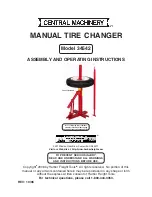
Jabiru Aircraft
Pilot Operating Handbook
Model J230-D
Revision:
6
28/2/2020
Page 47
4.9.10
Stalls
In any attitude or under any loading condition there is no natural stall warning. An artificial stall
warning horn is set to activate 5 to 10 KIAS above the stall speed in any configuration. All controls
are effective up to and completely through the stall and there is no noticeable tendency to enter a
spin after the stall.
4.9.11
Approach and Landing
Landings are normally conducted with full flaps. The landing approach is conventional. Care must
be taken to ensure airspeed is accurately maintained during the final landing approach. Timely
and appropriate use of power should be exercised to maintain the desired flight path and airspeed.
Excessively high approach speeds will result in prolonged floating and increased landing distance.
Normally the throttle should be fully closed during the 'flare' to reduce the tendency to float and
prolong the touchdown. Touchdown should occur on the main wheels initially, followed by the
nose gear which should be held clear of the ground during the initial ground roll. Positive braking
may then be applied depending on requirements and circumstances. For maximum braking
effectiveness the wing flaps should be retracted and back pressure applied to the control column.
4.9.12
Cross Wind Landing
The J230-D has been approved for operations in crosswinds of up to 14 Knots.
When landing in a strong cross wind use a wing low, crab, or a combination method of drift
correction. Avoid a prolonged hold off by allowing the aircraft to settle onto the runway in a slightly
nose high and wing low attitude, touching down on the into wind mainwheel first followed by the
other mainwheel and then the nose gear in quick succession. In strong and/or gusty wind
conditions it may be desirable to make the final approach at a slightly higher than normal airspeed
with partial or no flap selected.
4.9.13
Baulked Landing
In a baulked landing (go-around), the wing flaps should be retracted to take-off immediately after
full power has been applied. Upon reaching a safe airspeed, the flaps should be smoothly retracted
to the full up position and a normal climb established.
4.9.14
Flight Over Water
When life preservers and rafts are required, crew life preservers should be worn at all times. Life
rafts can be stowed in the baggage compartment.
















































